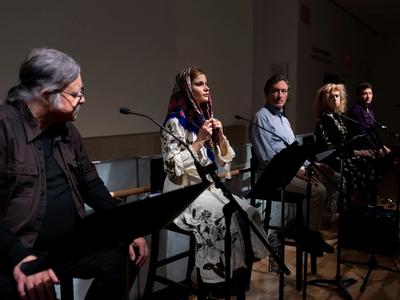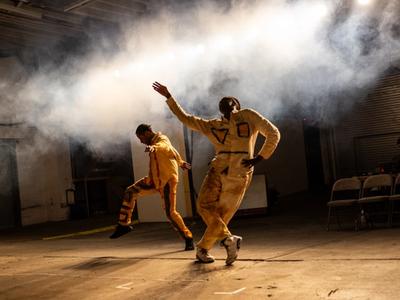“Can the theatre offer practices to survive?” – Mei Ann Teo at the 2025 Under the Radar Symposium

At the 2025 Under the Radar Symposium, held on January 9th in New York City, our Artistic Leadership Team Member Mei Ann Teo was invited to serve as one of three keynote speakers, alongside Kamilah Forbes (Apollo Theater), and Dorcy Rugamba (Rwanda Arts Initiative). The keynotes kicked off a day-long symposium for over 350 global arts leaders, cultural innovators, and artis professionals. Mei Ann’s speech reflected on the legacy and future of PCC following the retirement of our founder, Ping Chong, and against the backdrop of a deeply uncertain and volatile moment in our society and arts ecosystem In their keynote, Mei Ann addressed key questions guiding our evolving mission: Why do we exist? How do we continue? What do we hold onto? When do we let go? Drawing from their artistic practice and our community-engaged work, they explored how theatre can serve as a vital tool for connection, resilience, and survival in today’s world.
Please find the full speech attached below.
MEI ANN TEO UNDER THE RADAR SYMPOSIUM KEYNOTE
Wow. I can die now cause I’ve been introduced by the Carmelita Tropicana. There’s really nothing more to do in life. Thank you, Legend Carmelita. Bold and fearless, in all the terror of a life in art making, Carmelita. I keep thinking about the last moment of your last show. The way you remembered those we have lost and their legacy. Thank you for your legacy. We just celebrated the legacy of Morgan (Jenness) and Philip (Arnoult), who have both tangibly and spiritually changed my life. We are breathing together here in Mark’s (Russell) legacy which will also be Meropi (Peponides) and Kaneza’s (Schaal) legacy.
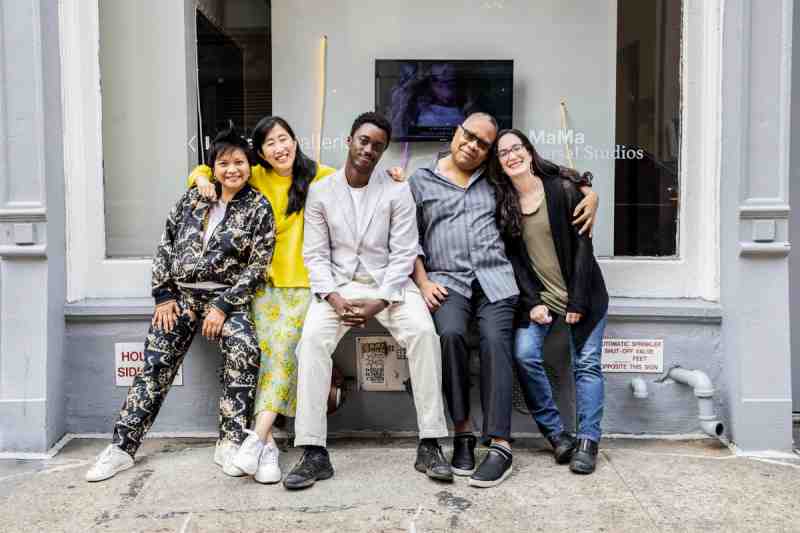
Legacy is also what we, the artistic leaders at Ping Chong and Company (PCC) are tasked to carry through. We are asking ourselves these 4 questions:
Why do we exist? How do we continue? What do we hold onto? When do we let go?
I first met Ping Chong through Anne Bogart, who matched me with him as a mentor on a grad school project. I was immersively theatricalizing an essay by Chinese dissident poet Liao Yiwu called “19”, where he recalls the visceral experiences of nineteen June 4th’s, beginning with the Tiananmen Massacre in 1989, when he wrote a poem for which he was then arrested and detained for four years in a hard labor camp. Ping was truly a match made in heaven for me. An artist whose generative work wove disparate histories to find new connective tissue to understand the human condition, who was utterly Asian and also unbound by Asianness, and who has limitless curiosity, and capacity for listening and supporting people in sharing their lived experiences. In him, I found a north star. A north star who had the vision and support of a navigator like Bruce Allardice who built PCC with him for 50 years. I remember longing - WHERE’S MY BRUCE?
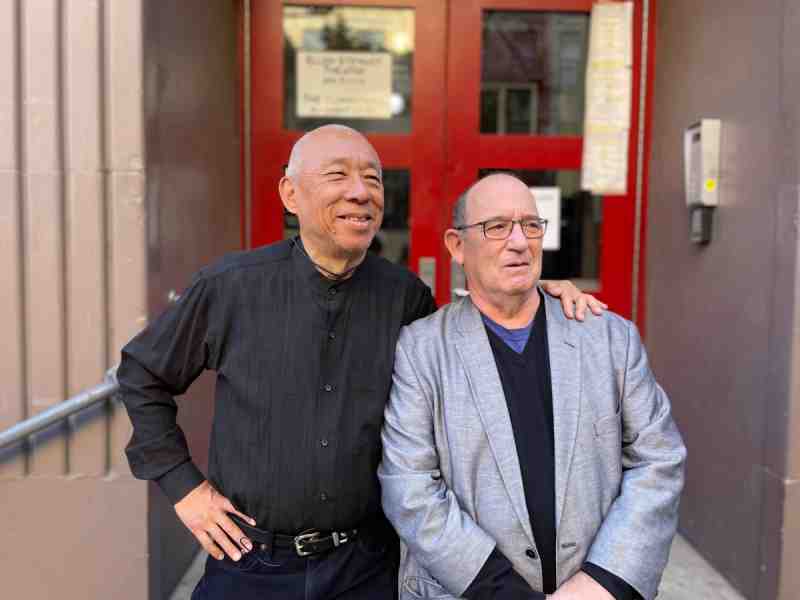
When I was invited to join PCC upon Ping and Bruce’s retirement, I candidly asked why the company was continuing and shared that if we don’t come to a pertinent reason of why we should exist beyond Ping, that “shutting it down” should be a possibility. Soon after, I went to see PCC’s Undesirable Elements: Ukraine, right here in the East Village, where Ukrainians and Ukrainian Americans told their personal stories collectively, weaving an extraordinary quilt that bound the war closer to us because we were listening to our neighbors. I remember feeling - PCC should continue if only for this.
And, in the year and a half since I joined the company, that list has grown to include the intentional and collective organizational visioning, the Undesirable Elements community engaged practices in community and classroom, our collaborations with Diana Oh, Talvin Wilks’ project on Maria Ressa and the fragility of democracy, Nile Harris’ explosively provocative works, btw - we just added two more shows of Temporary Boyfriends at Chocolate Factory because the run sold out in 5 min so get your tickets now - OKAY ADVERT OVER.
There are abundant reasons why we should exist.
But how do we continue? What do we hold onto? And is it even possible to hold onto what is ephemeral?
We asked Ping what he wanted for the future of Ping Chong and Company. His words: “I’m done. Feel free to be yourselves with your own vision. It’s a vessel for artists at a time where it’s so difficult to be at home. I would be happy if we continue to be curious about the rights of every human being in the world, and our humanity and the loss of humanity in this time. That’s what matters to me.”
North Star.
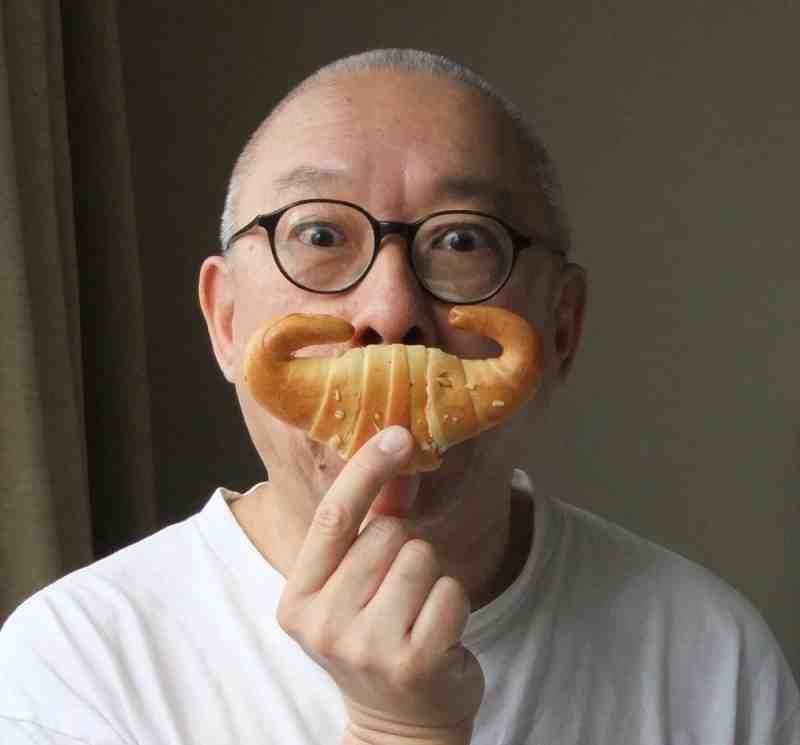
I wish for you all a North Star who can show you the way of when and how to let go. Ping’s letting go after 50 years, in a most generous act of actually letting go, has meant that we get the freedom to ask and answer these questions for ourselves. We are not participating in hagiography. We get to define what the legacy is - and to become the legacy - with the extraordinary gift of a company that originated in an artist’s unique impulse: from any source, to many streams, towards which ocean calls.
This PCC vessel is a place where I can make at the intersection of artistic, civic, and contemplative practice. My central question now is - how do we move from consumption to communion? I found a source at Mount Tremper Zen Monastery. Oryoki, translated as “just enough”, is a highly choreographed meal ritual that asks the participant, who is served a meal, to only ask for what you need. And it might result in public humiliation if you greedy fuckers take more, because there is NO moment in this highly choreographed silent ritual to empty your bowl into the trash. When you come to the end of the meal, the bowl is wiped clean with bread, then washed with green tea that is drunk, and then wiped dry by the very cloth it had come wrapped in. No waste, each grain of rice accounted for.
It’s been the seed of the next work I want to make. So when the opportunity of our annual event came where we gather with our community, share artistry and break bread, I thought - let’s roll the workshop budget into this event budget - and we adapted this meal practice for ourselves. Sara Zatz, in her 28 years of working at PCC, helped me to curate the performers of the ritual, a beautiful cross section of staff, leadership, former casts, current teaching artists, and even board members.
The artistic leadership team, including our 8 months preggers Managing Director Jane Jung, helped wrap 150 coconut shell bowls with cloth napkins. Two hours before the event started, I served all the performers with the meal ritual. After eating in silence, they each shared how they came to PCC, and the refrain I heard again and again- “being a part of that changed my life”. That table contained so much history, so much legacy of service into artistic expression that materially and spiritually shifted each life. Ping was not there at that table, but Ping was there at that table.
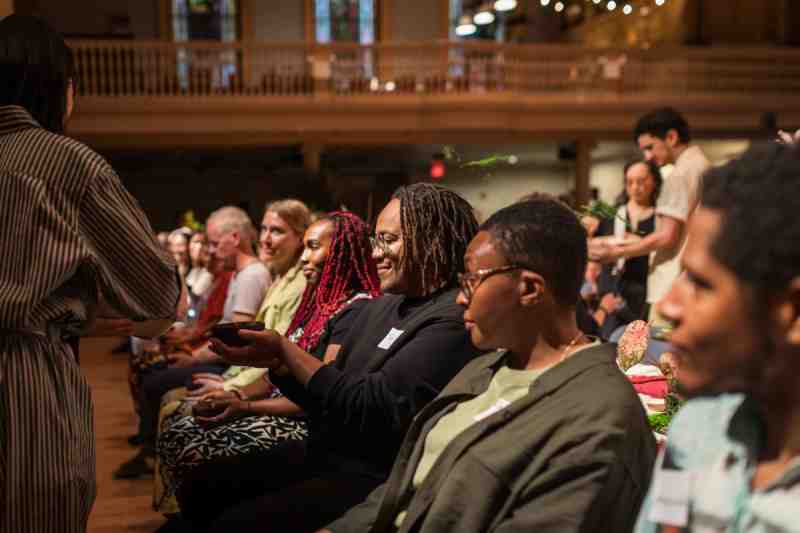
The rehearsal room is that table. The board meeting is that table. This symposium is that table, where we can ask - must ask:
Why do we exist? How do we continue? What do we hold onto? When do we let go?
And now you are all in my existential crisis...I’m sorry. You’re welcome. So. 2025. We know what is coming, but we don’t know what will happen. We know who is being targeted, but not when the rest of us will be added to that list, and we will be. What will we need? Can the theatre offer practices to survive?
The Natyashastra, the Sanskrit treatise on the performing arts, tells us that theatre can suspend us from the ordinary world and transfer us to a parallel reality of wonder, where the inner state is transformed and our souls are shifted to a higher consciousness. We have inherited the legacy of a form that can do this, if our practice of it is in alignment with that purpose. Our art is not only able to reveal the way the world works. It can show us how to live. We can do this.
Thank you.
